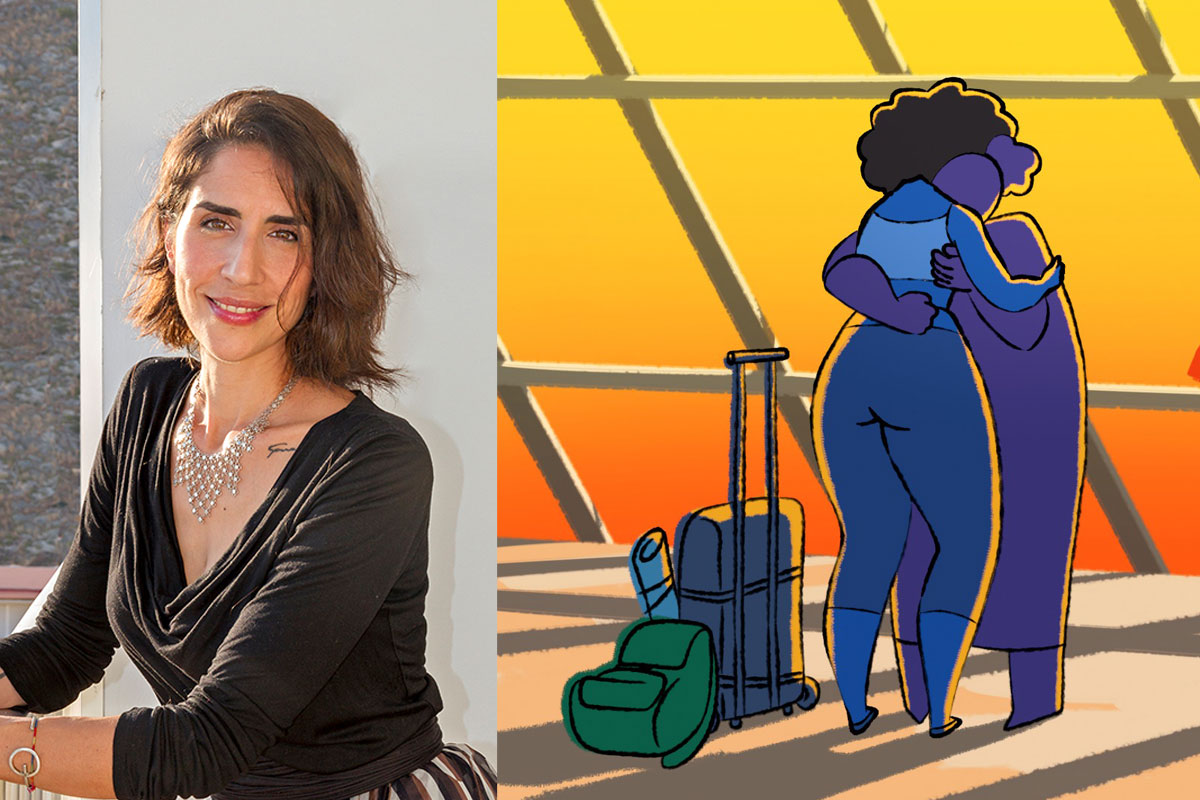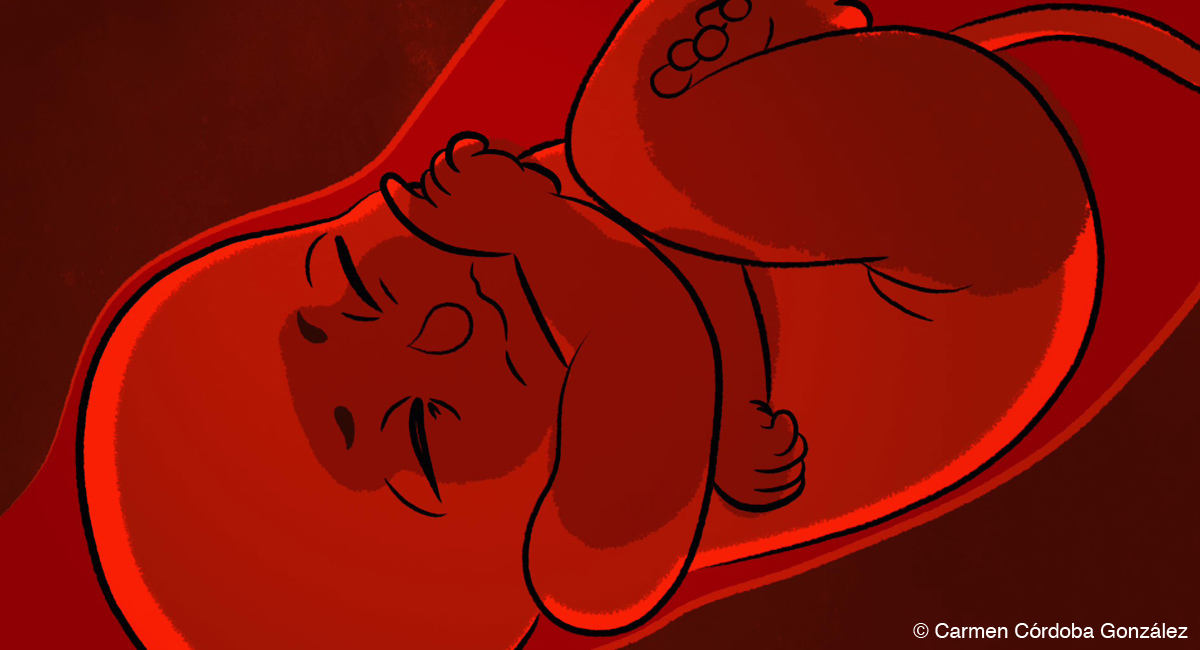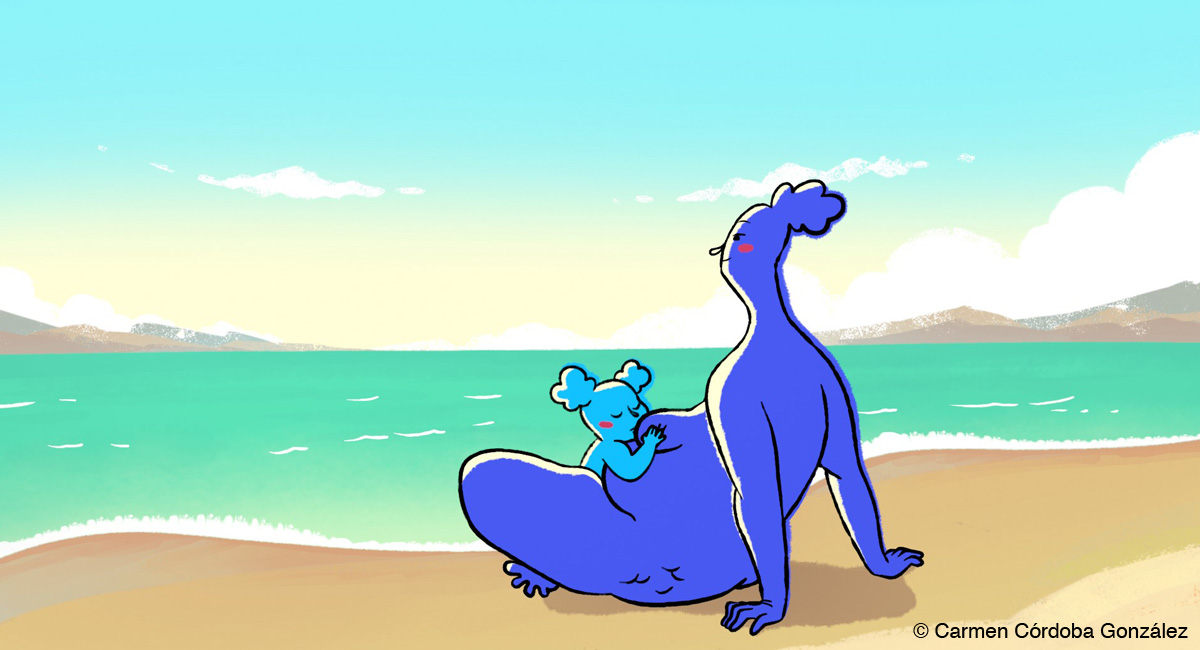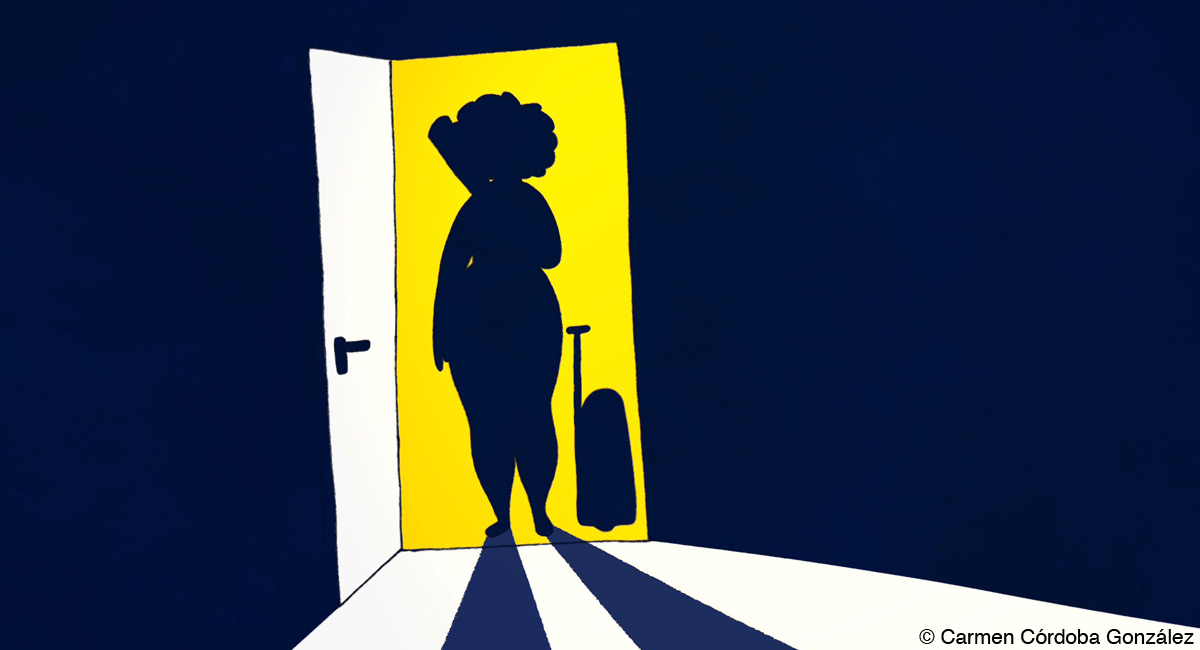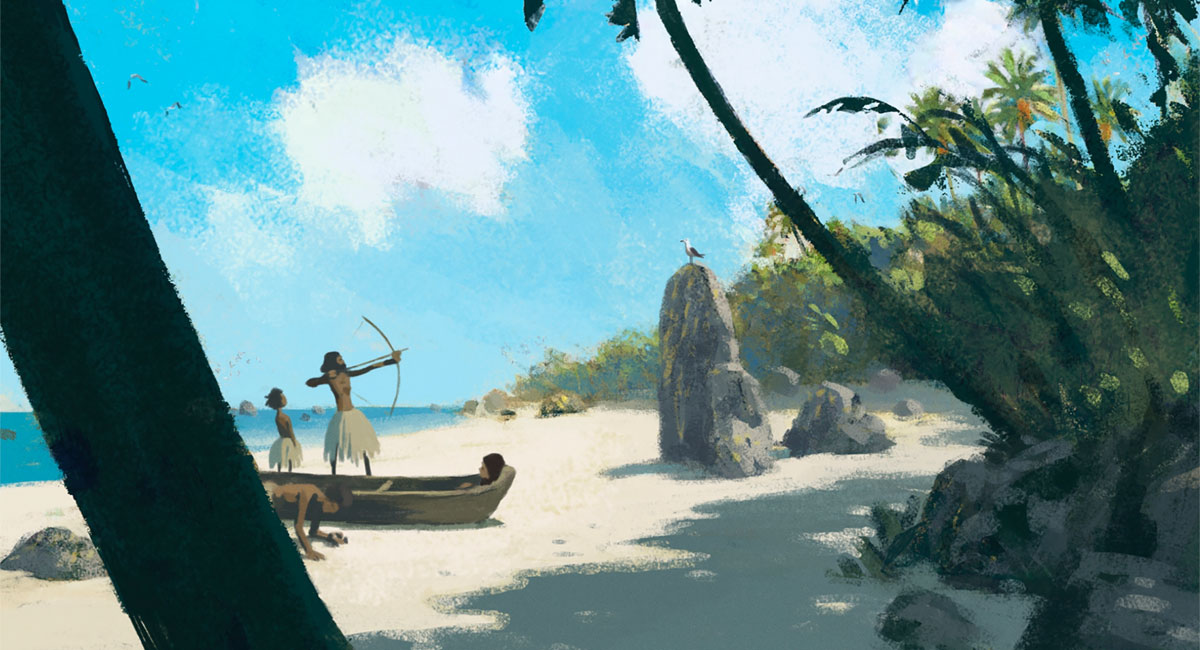Synopsis
Mother and Daughter are roped for life by an eternal bond that heals and hurts, and that is perpetuated when Daughter becomes a Mother.
Film credits
Director: Carmen Córdoba González
Scriptwriter: Carmen Córdoba González
Producer: Carmen Córdoba González
Music: Fryluka Musical
Technique: 3D digital
Running time: 10:00
Roped a film that depicts the beauty and transience of spinning the thread of life. The simplicity and directness of the visual presentation and storytelling of the film make its message strikingly acute.
The film was nominated for the “International Competition” category at the 30th Stuttgart International Festival of Animated Film (ITFS).
Here is the insightful story behind Roped that we’ve heard from Roped creator Carmen Córdoba González.
Interview with Córdoba González Carmen
Hideki Nagaishi (HN): What was your biggest aim or purpose in developing this film and delivering it to global audiences?
Córdoba González Carmen: I’m always looking for moving the audience with my films and provoking reflections about topics that seem relevant at a social or human level to me. In Roped I wanted to speak about life and death and on top of all, about the evolving Mother-Daughter link through the maturing process.
These are universal themes that affect us all, so the proposal is quite honest. I don’t pretend to give answers or advice to anyone because I just don’t have them, and even if I had them they just worked for my particular case. What I wanted to do is to throw the spectator some life scenes which reflect that eternal fight between our independence willing and the emotional dependency that roped us to our parents for life.
Each spectator receives this according to their own experience and way of being, and complete the film in a unique way that only belongs to them. This is the most interesting thing about cinema for me.
HN: How did the film project start?
Córdoba González Carmen: I just have finished my first short film Roberto when all the emotions that were shaking my life at that moment crystallized in the idea of Roped. Four years ago I became a mother (of twins) turning my life upside down, and barely four months later my own mother confessed me that she had a terminal cancer. Living together with the two opposites of existence – life and death – made me live my motherhood and daughterhood from a very special place, deeply reflecting on many vital and existential questions.
Roped raised from all these feelings and thoughts, and it was my personal way to process thought art all that was beyond me emotionally, my therapy.
HN: What kind of difficulties, besides the creative side, has this film project faced and how did you deal with or solve them?
Córdoba González Carmen: The creative part of this project was very fluid and enjoyable for me and the rest of the team. Though, my personal circumstances were the worst and hardest part for me. When I started the project, my kids were still under two years old, so it was a huge effort for me and for the rest of the family to combine parenting and working. Thanks to my mother and my husband I could get enough time to develop this film, but the production was even harder since my mum entered the final phase of her illness. For me it was very tough finding the energy for the workday after she died. The team’s support and knowing that we were making this short film as a tribute to her helped me a lot.
HN: Where did the initial idea of the story and characters’ personalities come from? And what did you take care in the most while developing the entire story of the film?
Córdoba González Carmen: The initial idea was born from this comprehension and identification with my own mother when I became one. I admired her so much, and at the same time I felt guilty for many behaviors I have had as a daughter. In the first place, I thought on presenting this struggle in a literal way with a physical umbilical cord that still joined Mother and Daughter during the whole process of becoming an adult woman. Later I had the idea of these infinite arms as a symbol of bond and presence, which gave us a powerful visual and narrative tool.
As regards the characters, from the very beginning, I felt how they have to be and what they have to represent. They are quite based on my own relation with my mother.
The thing that I have been concerned with the most while developing the story has been to succeed on transmitting the motivations and emotions of each character. The things that happen in this story go easily to blame or to judgement, and I wanted to keep the empathy with both characters all the time. Considering Mother is just a ball of arms most of the time, it was a great challenge for us to be capable of transmitting her emotions and thoughts with this special character design and without words.
HN: What did you take care in the most on the visual design of the characters and the setting/backgrounds/environment?
Córdoba González Carmen: Addressing such universal and transcendental themes, I felt that we must be very careful to not be pretentious. I guess that was the reason why I thought in a very simple style since the beginning, an honest visual design with a fresh and organic style and with a colour palette that supported the emotional travel of the story. I also wanted to transmit the rawness and beauty of life, especially in the two birth scenes. In my point of view, the two births that open and close the film are the main scenes that structure the whole film, and with them I wanted to express my own experience as a mother. I’ve been deeply impacted after seeing what the human body can do, and it seems absolutely beautiful for me without toning down what Nature does.
HN: Could you please let us know your creative journey for this film, especially regarding the technical aspects? I remember that you showed us some VR technology during your lecture on this film at World Animation Day 2022 in Madrid.
Córdoba González Carmen: Yes, this project has benefited from innovative technologies but always keeping the artisan and artistic finishing we wanted. The selection of Roped in NextLab was the first milestone and the launching of the project. In this workshop the participants learned how to use VR technology for developing in record time a one minute teaser of our projects. I decided to explore the final birth scene, and thanks to the agility and speed of the VR tools I found a way of making explicit the philosophical component I wanted to include in the story, though the representation of a cosmic birth.
The result was quite nice and helpful, but didn’t have the desired finishing, so I decided to use an open source 3D software called Blender for production, despite the animation team never having used it. Blender has an excellent 2D animation tool, called Grease Pencil, which seemed quite appropriate for the qualities we were seeking in line and colour. In addition, having this 2D environment integrated in a 3D software was very powerful for developing the complex cosmic scenes. During the production we found additional advantages from this choice, such as getting easily backgrounds images. We modelled the main set of Daughter’s apartment in 3D and used 2D-looking shaders and art lines to get a render as a base that we finished in Krita (an open-source painting software) and used as backgrounds images for the shots.
HN: As it is a non-dialogue film, I felt that the music and sounds throughout the film delivered to me the characters’ emotions a lot. Could you please let us know the story behind the music and sound creation?
Córdoba González Carmen: Music and sound are fundamental tools for narrative, and very often creators who come from visual arts don’t pay attention to them or don’t know the narrative power they have. With my first short film Roberto I learnt a lot about it and after then I studied music for directors and writers, so now it’s something I have very present along the creative process.
I worked with Fryluka Musical in Roberto and I didn’t hesitate to repeat it with him in Roped, since he is a very talented composer and also a wonderful person to work with. For this film we were looking for something more minimalist that accompanied the visual style, and also to use the silence quite often to give the story more drama and realism. Fryluka used different instruments to identify the characters, the cello for Mother and the clarinet for Daughter, helping the spectator to empathize with one or another in each moment and also he associated some leitmotif with the important concepts of the story, as the love between Mother and Daughter or the legacy.
Toni Mortero has been the sound designer, as well as being responsible for the 3D part of the production. Toni is also a very talented partner who worked in Roberto also, and he wanted to work with the sound as well this time. I think he has made a wonderful work recreating an atmosphere that is realistic and stylized at the same time, which also enforces the global style of the film.


